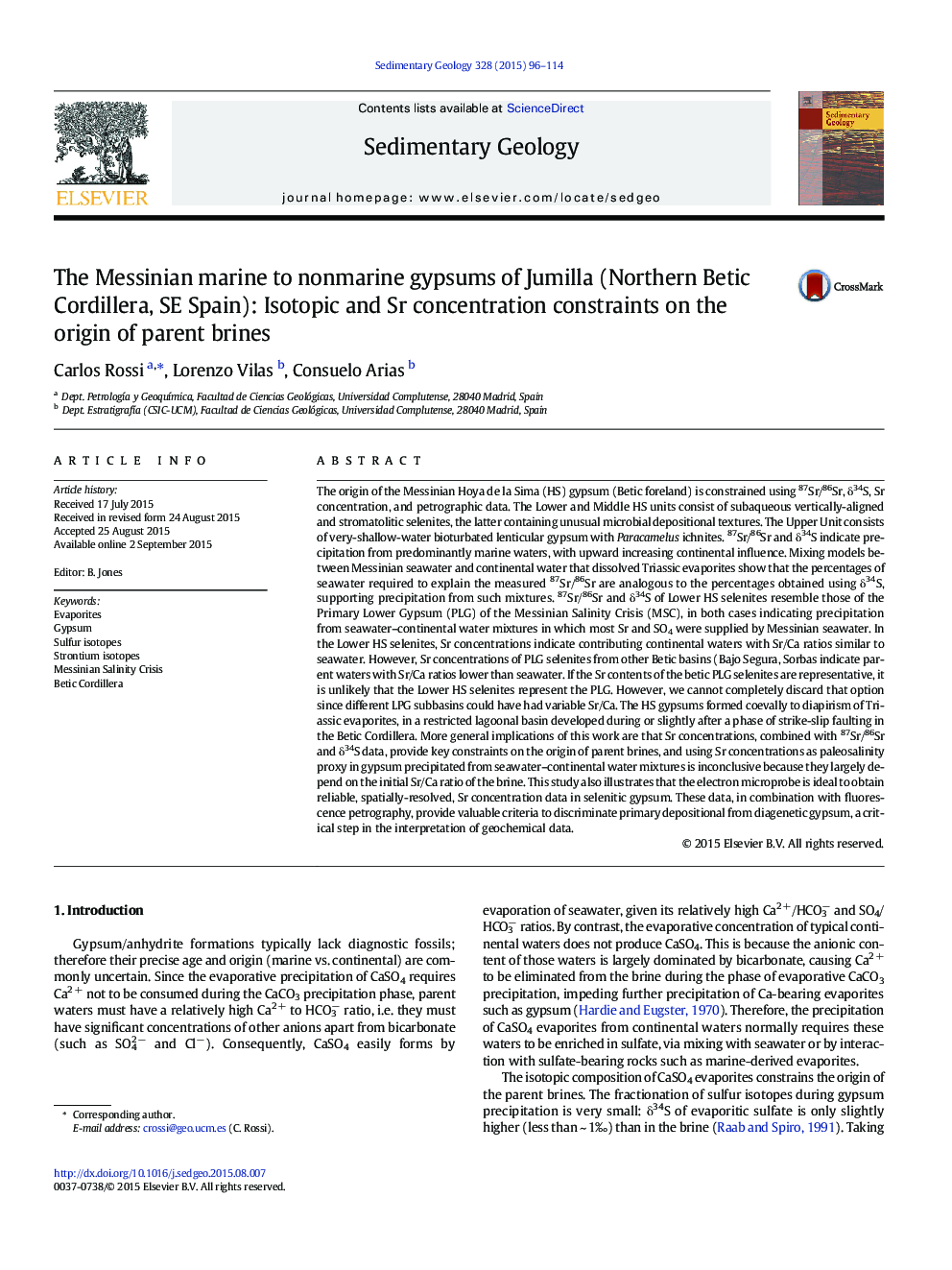| کد مقاله | کد نشریه | سال انتشار | مقاله انگلیسی | نسخه تمام متن |
|---|---|---|---|---|
| 4689170 | 1636035 | 2015 | 19 صفحه PDF | دانلود رایگان |

• Jumilla gypsum formed from seawater mixed with meteoric water that dissolved Triassic evaporites.
• Sr concentrations combined with Sr and S isotopes unequivocally constrain brine origins.
• Sr–S isotopes and Sr content discriminate Messinian paleo-Mediterranean from lagoonal gypsums.
• In mixed seawater–continental water gypsum, Sr concentration is uncertain as paleosalinity proxy.
• Electron microprobe and fluorescence help to discriminate depositional from diagenetic gypsum.
The origin of the Messinian Hoya de la Sima (HS) gypsum (Betic foreland) is constrained using 87Sr/86Sr, δ34S, Sr concentration, and petrographic data. The Lower and Middle HS units consist of subaqueous vertically-aligned and stromatolitic selenites, the latter containing unusual microbial depositional textures. The Upper Unit consists of very-shallow-water bioturbated lenticular gypsum with Paracamelus ichnites. 87Sr/86Sr and δ34S indicate precipitation from predominantly marine waters, with upward increasing continental influence. Mixing models between Messinian seawater and continental water that dissolved Triassic evaporites show that the percentages of seawater required to explain the measured 87Sr/86Sr are analogous to the percentages obtained using δ34S, supporting precipitation from such mixtures. 87Sr/86Sr and δ34S of Lower HS selenites resemble those of the Primary Lower Gypsum (PLG) of the Messinian Salinity Crisis (MSC), in both cases indicating precipitation from seawater–continental water mixtures in which most Sr and SO4 were supplied by Messinian seawater. In the Lower HS selenites, Sr concentrations indicate contributing continental waters with Sr/Ca ratios similar to seawater. However, Sr concentrations of PLG selenites from other Betic basins (Bajo Segura, Sorbas indicate parent waters with Sr/Ca ratios lower than seawater. If the Sr contents of the betic PLG selenites are representative, it is unlikely that the Lower HS selenites represent the PLG. However, we cannot completely discard that option since different LPG subbasins could have had variable Sr/Ca. The HS gypsums formed coevally to diapirism of Triassic evaporites, in a restricted lagoonal basin developed during or slightly after a phase of strike-slip faulting in the Betic Cordillera. More general implications of this work are that Sr concentrations, combined with 87Sr/86Sr and δ34S data, provide key constraints on the origin of parent brines, and using Sr concentrations as paleosalinity proxy in gypsum precipitated from seawater–continental water mixtures is inconclusive because they largely depend on the initial Sr/Ca ratio of the brine. This study also illustrates that the electron microprobe is ideal to obtain reliable, spatially-resolved, Sr concentration data in selenitic gypsum. These data, in combination with fluorescence petrography, provide valuable criteria to discriminate primary depositional from diagenetic gypsum, a critical step in the interpretation of geochemical data.
Journal: Sedimentary Geology - Volume 328, October 2015, Pages 96–114